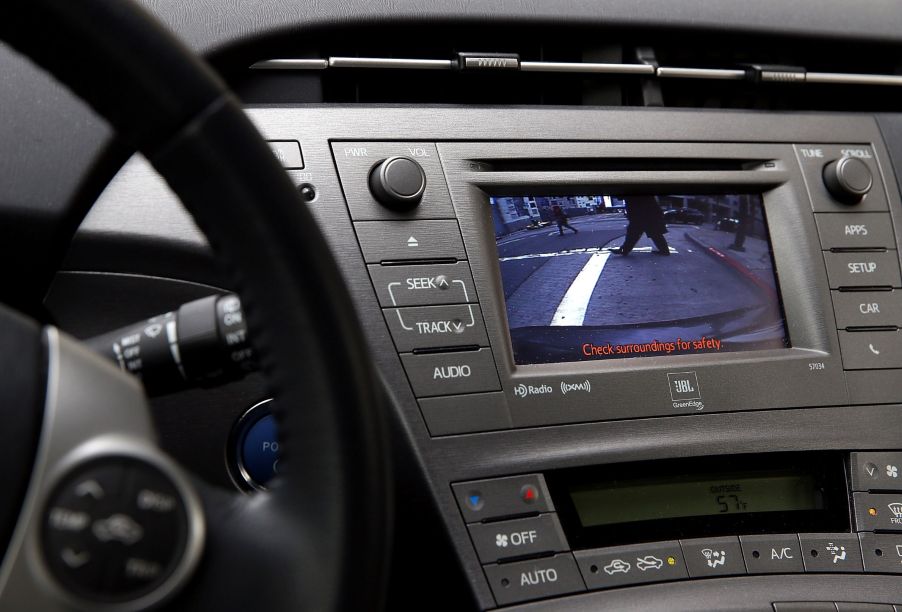
A Backup Camera Doesn’t Automatically Improve Safety
Cameras are increasingly being used in many aspects of car safety. In fact, in addition to airbags and seat belts, one key mandatory safety feature is the backup camera. However, as with other safety features, simply having a backup camera installed doesn’t automatically make you safer.
Why backup cameras are mandatory

Although backup cameras, aka ‘reverse cameras’ or ‘reversing cameras,’ were initially high-end luxury features, they’re now found across the board. Even some motorcycles are getting them. But it’s not just because the technology has gotten cheaper or more compact.
A backup camera is now mandatory for every sub-10,000-lb vehicle sold in the US, Car and Driver, and Autotrader report. That’s been the case since May 1st, 2018, when the US Department of Transportation regulation went into effect. Said regulation had been introduced in 2014, ABC News explains, but it gave the industry 4 years to implement.
But the reason for the law actually dates back to 2002. That’s when Dr. Greg Gulbransen accidentally backed over and killed his 2-year old son, Cameron. The tragedy eventually led to the 2008 Cameron Gulbransen Kids Transportation Safety Act, signed into law by then-President George W. Bush. This act gave the NHTSA until 2011 to create an improved way of detecting pedestrians behind cars. It took until 2014, and a lawsuit, for the White House to issue a ruling, though.
On the face of it, having mandatory backup cameras is a good thing. Backover accidents kill roughly 210 people a year, Edmunds reports, and injure about 15,000. And roughly 1/3rd of these incidents involve young children, Cars.com reports. Plus, it can be a helpful tool for backing into tight spaces, DrivingLife reports.
However, as with any other safety or driver-assistance feature, a reverse camera isn’t foolproof.
Backup cameras can give a false sense of security

Firstly, it’s important to note that, while there is a law governing backup camera presence, there isn’t one regulating quality, Car and Driver explains. Yes, a sub-$16,000 2020 Kia Rio has a backup camera, as does a $400,000 Rolls-Royce Cullinan. But it’s entirely possible the Rio’s camera has a lower resolution than your smartphone’s camera. And that’s before taking into account dirt or other lens obstructions.
Secondly, even if one reverse camera has the same image quality as another, that doesn’t mean it’s equally easy to use. One camera could offer guidance lines, or come bundled with additional parking sensors. Both of these extra features add clarity to what the camera displays. And some backup cameras even digitally remove an attached trailer, for more visibility and easier parking.
However, the biggest problem with backup cameras is that they don’t necessarily make you a better driver. Yes, these cameras can improve rear visibility by 46%, Cars.com reports. And they do indeed help cut down on rear blind spots, Consumer Reports explains. But, just as with blind-spot monitoring or forward-collision warning, it’s entirely possible for drivers to misunderstand the cameras’ limitations. Or worse, become overly-reliant on them.
From 2008-2011, the Washington Post reports, the number of new cars sold with backup cameras jumped from 32% to 68%. However, while backover deaths dropped by 31%, injury rates only dropped 8%. That’s because, as CBS News explains, backup cameras don’t provide a full view of what’s behind the car.
In addition, although a reverse camera improves rear visibility, that’s only directly behind you. What about what’s going on to the side of your car? If you only look at the screen, you’ll miss everything else that happens behind your car outside the camera’s field of view.
How to use them properly
Ultimately, backup cameras are an additional tool for a driver. They expand your rear view, but they should still be used in conjunction with the standard reversing techniques. That means checking every rear blind spot, including the side ones, and paying attention to what’s going on there.
If your car doesn’t have a reverse camera, it’s still possible to give it one, Motor Trend, and The Drive report. There are numerous aftermarket cameras on the market that can be mounted behind a license plate or in the bumper. Some feed into existing infotainment screens, while others come with mountable displays.
Even the best backup camera, though, won’t replace your own eyes and brain. But it will help them see more clearly.
Follow more updates from MotorBiscuit on our Facebook page.


